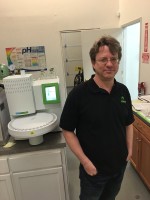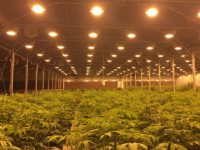In my last column, I took a refreshing step out of the weeds of the specifics behind cannabis analyses and took a broader, less technical look at the cannabis industry. I had envisioned The Nerd Perspective being filled with profound insights that I have had in the cannabis industry, but I have realized that if I restricted this column to insights most would consider profound…well…there would not be many articles. So in this article, I want to share an insight with you, but not one that is earth shattering. Instead, I want to talk about a simple concept in a way that might help you think a little differently about the results your lab generates, the results you have to pay for or even the results printed on a cannabis product you might purchase.
This article is all about the simple concept of concentration – the expression of how much of something there is in relation to something else. We use expressions of concentration all the time – calories per serving, percent alcohol in beer, even poll results in the presidential election circus. Cannabis is not excluded from our flippant use of concentration terms – percent cannabinoid content, parts-per-million (ppm) residual solvents, and parts-per-billion (ppb) pesticides. Most of us know the definition of percent, ppm, and ppb, and we use these terms all the time when discussing cannabis analytical methods. During my career in analytical chemistry, it has occurred to me that parts per billion is a really infinitesimal amount…I know that intellectually, but I have never tried to actually visualize it. So being the nerd that I am, I went about comparing these often-used concentration terms visually in my kitchen.
I started by preparing a 1% solution of food coloring paste in water. This was accomplished by weighing out 5g of the food coloring and dissolving it into 500mL of water (about one teaspoon into a pint). The resulting solution was so dark it was almost black:
The picture above expresses the low end of what we care about in terms of cannabinoid concentration and a pretty normal value for a high-concentration terpene in cannabis.
I then took one teaspoon of that mixture and dissolved it into 1.32 gallons of water (5mL into 5000mL), resulting in a 10ppm solution of green food coloring in water:
I did not expect the resulting solution to be so light colored given the almost-black starting solution, but I did dilute the solution one thousand times. To put this into perspective, 10ppm is well above many state regulatory levels for benzene in a cannabis concentrate.
I then took one teaspoon of the almost-colorless 10ppm solution and dissolved that into another 1.32 gallons of water, resulting in a very boring-looking 10ppb solution of green food coloring in water:
Obviously, since I diluted the almost-colorless 10ppm solution a thousand times, the green food coloring cannot be seen in the picture above. As a reference, 10ppb is on the low end of some regulations for pesticides in food matrices, including – possibly – cannabis. I know the above picture is not really very compelling, so let’s think in terms of mass. The picture above shows eleven pounds of water. That eleven pounds of water contains 50 micrograms of food coloring…the weight of a single grain of sand.
To expand on the mass idea, let’s take a look at the total mass of cannabis sold legally in Colorado in 2015 – all 251,469 pounds of it. To express just how staggeringly small the figure of 10ppb is, if we assume that all of that cannabis was contaminated with 10ppb of abamectin, the total mass of abamectin in that huge amount of cannabis would be just 1.143g – less than half the mass of a penny.
To me, that is an extremely compelling picture. The fact is there are instruments available that can measure such infinitesimal concentrations. What’s more, these tiny concentrations can be measured in the presence of relatively massive amounts of other compounds – cannabinoids, terpenes, sugars, fats – that are always present in any given cannabis sample. The point I’d like to make is that the accurate measurement of trace amounts of cannabis contaminants including pesticides and residual solvents is an astounding feat that borders on magical. This feat is not magic though. It requires extremely delicate instrumentation, ultra-pure reagents, expert analysts, and labor-intensive sample preparation. It is far from trivial, and unlike magic, requires a large investment on the part of the laboratories performing this feat of science. Other industries have embraced this reality, and the cannabis industry is well on its way toward that end…hopefully this article will help put the job of the cannabis analytical lab into perspective.






































